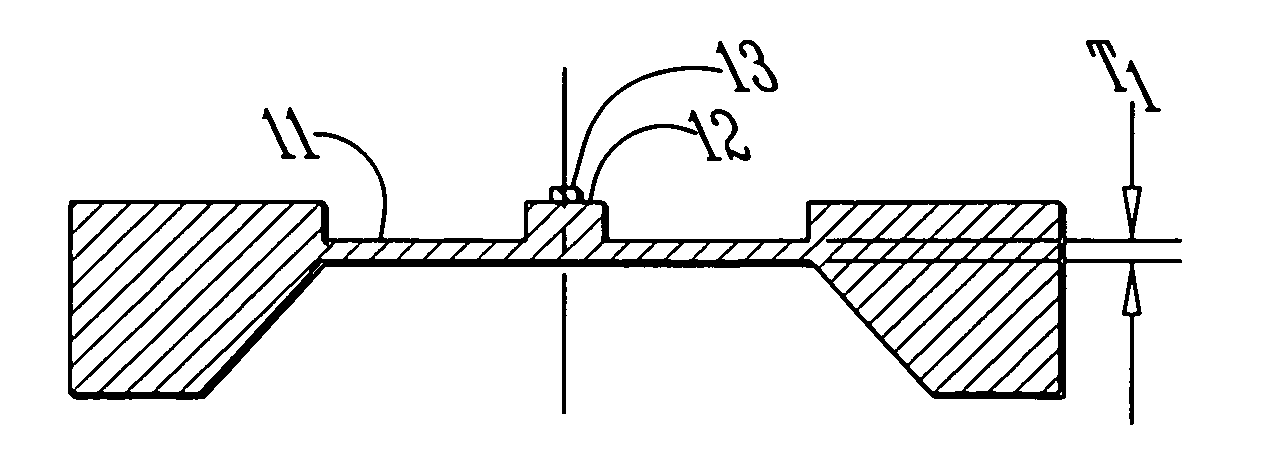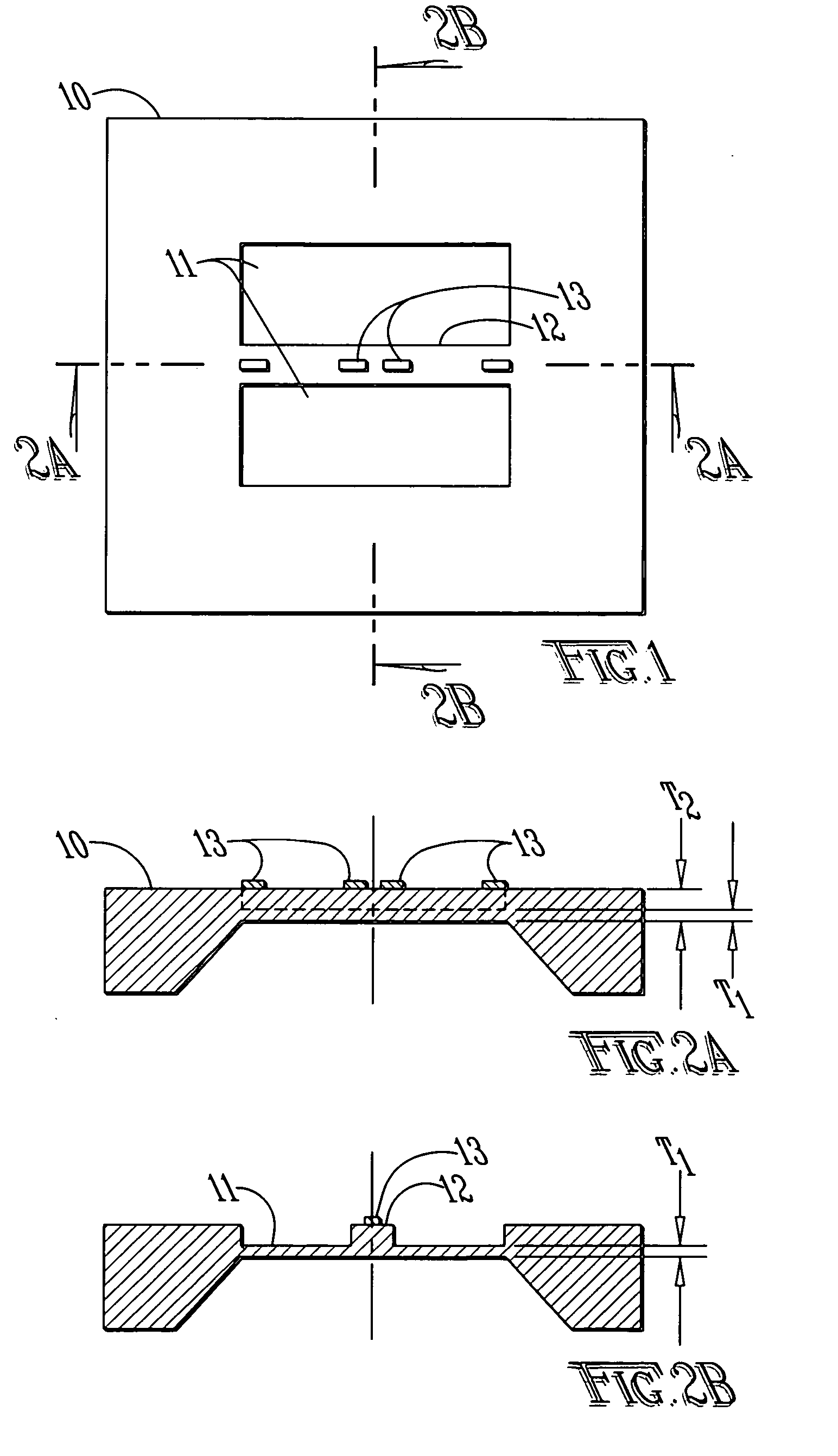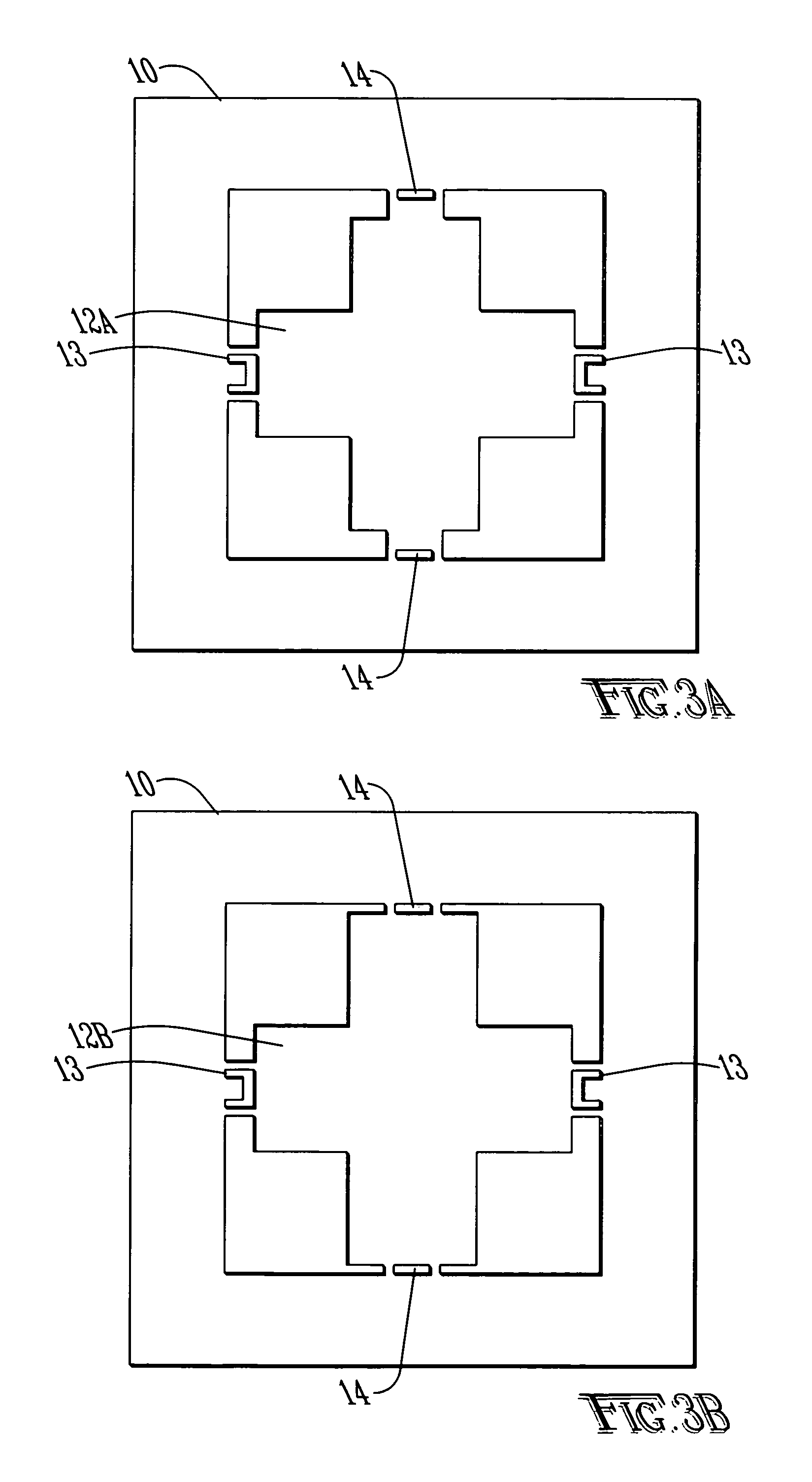Composite MEMS pressure sensor configuration
a pressure sensor and composite technology, applied in the direction of fluid pressure measurement by mechanical elements, fluid pressure measurement using elastically deformable gauges, instruments, etc., can solve the problems of reducing the yield rate, compromising the performance of the mems pressure sensor, and being larger and more expensive. , to achieve the effect of reducing the mass of the sensor, limiting the deflection, and reducing the gravity error
- Summary
- Abstract
- Description
- Claims
- Application Information
AI Technical Summary
Benefits of technology
Problems solved by technology
Method used
Image
Examples
Embodiment Construction
[0035] Referring to FIG. 1 the top view of pressure sensing die 10 is shown that measures pressure. Two cross-sectional views of die 10 are shown in FIG. 2A and FIG. 2B. In the shown embodiment, the bottom side of die 10 is etched to a predetermined depth in order to form a flat diaphragm of thickness T2. The top surface of the die 10 is further etched selectively around the beam to form a thinned area web / membrane 11 with thickness T1 while keeping the beam 12 at the original thickness T2. The end result is an integrated structure consisting of a constant width narrow thicker beam 12 formed along the centerline of the thinner diaphragm 11. Piezoresistive strain gages 13 are diffused, implanted, or affixed to, the narrow thicker beam. Two strain gages are place on or around the outer edge and two strain gages are placed around the center of the beam. When pressure is applied, the thin diaphragm 11 deflects. Its deflection is constrained by the thicker beam 12. This creates a force t...
PUM
| Property | Measurement | Unit |
|---|---|---|
| pressure | aaaaa | aaaaa |
| absolute pressure | aaaaa | aaaaa |
| absolute pressures | aaaaa | aaaaa |
Abstract
Description
Claims
Application Information
 Login to View More
Login to View More - R&D
- Intellectual Property
- Life Sciences
- Materials
- Tech Scout
- Unparalleled Data Quality
- Higher Quality Content
- 60% Fewer Hallucinations
Browse by: Latest US Patents, China's latest patents, Technical Efficacy Thesaurus, Application Domain, Technology Topic, Popular Technical Reports.
© 2025 PatSnap. All rights reserved.Legal|Privacy policy|Modern Slavery Act Transparency Statement|Sitemap|About US| Contact US: help@patsnap.com



